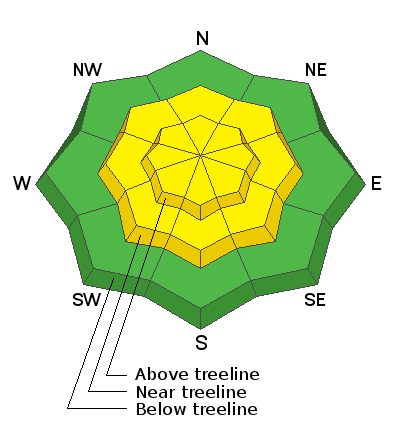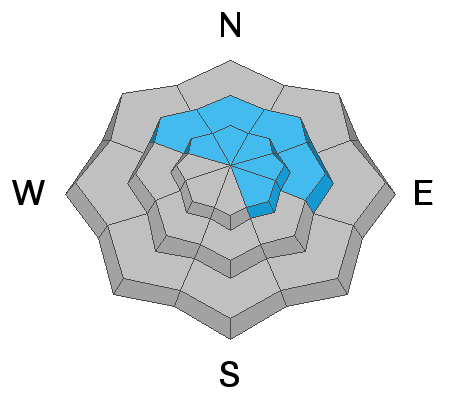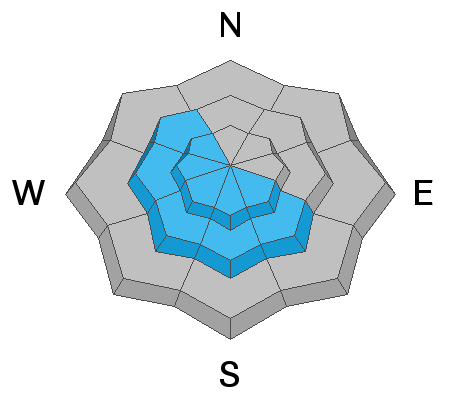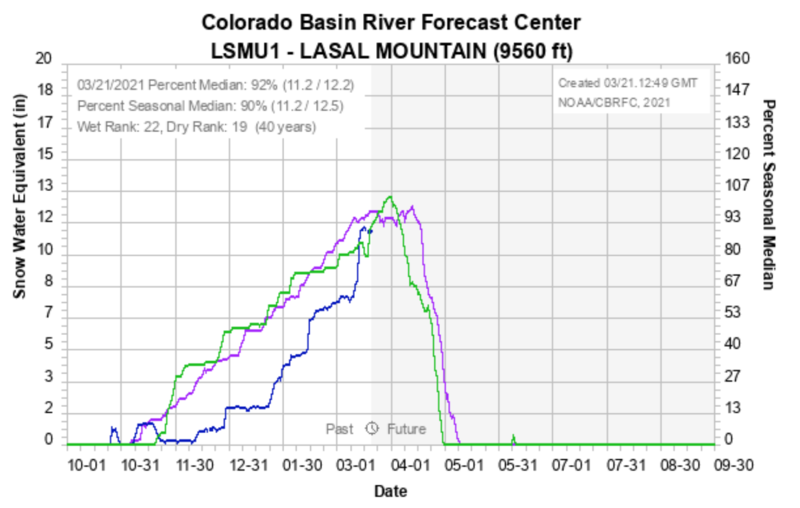The 2021 Spring Awareness Campaign is underway. Help us save lives through avalanche forecasts and education. Consider making a donation to show your support
HERE.Over the last couple of days, two different fatal avalanche accidents have occurred in
CA and
CO. Our deepest condolences to the friends and families of these victims.
The Geyser Pass Road has been plowed and is down to the dirt in most areas. Patches of ice and snow exist and it turns muddy as the day heats up. All-wheel-drive recommended.
The Lower Utah Nordic Alliance (LUNA) groomed into Gold Basin on Friday.
24 Hour Snow 5" 72 Hour Snow 5" Base Depth in Gold Basin 68" Wind NNE 20-30 G 45 Temp 18F
Look for scattered snow showers today with another 1-2" of snow possible throughout the day as the center of a low-pressure system passes through the AZ/NM border. Yesterday's storm resulted in 5" of new snow (0.4" SWE) with NNE winds, 20-35 mph that picked up last night and will continue until mid-day when they will diminish and shift towards the NW. Clearing skies by late-afternoon and high temps at 10,000' will be around 33F. A transient ridge will then push this system east and yet another system enters our area mid-day tomorrow. This system will favor the southern mountains and looks likely to bring a good-dose of moisture with conservative estimates of 1-foot of snow to the high country of the 4 Corners Region by the end of Friday.
Snowpack Discussion
3-5" of new snow yesterday with moderate NNE winds overnight has likely resulted in numerous shallow wind slabs in wind-exposed terrain at higher elevations. Yesterday in more wind-sheltered areas, I observed a variety of surfaces that the new snow has fallen-on. On southerly aspects, I encountered a supportive-crust and on well-shaded, northerly aspects, I observed soft snow containing some graupel in the uppermost layers. A couple of shovel-tilt-tests informed me that some of these layers are not bonding very well and it will be interesting to see how new snow and/or wind-drifted snow will bond with these surfaces.
Deeper in the snowpack, time and warm temperatures have helped the snowpack adjust to the large snow load we received on March 13th, but it's still possible to trigger a deep and dangerous avalanche on a buried persistent weak layer of sugary, faceted snow near the ground. At lower elevations, these weak layers have consolidated and in places are 1-finger in hardness (strong). At higher elevations, these facets are often thicker, and only fist-hardness (weak).
It's now been over a week since the last avalanche cycle. Getting out and about we've observed numerous slides that ran on northerly aspects near and above treeline that failed on a buried persistent weak layer of sugary, faceted snow near the ground. Most of these avalanches occurred in rocky, shallower snowpack areas or in repeat-running slide paths.










